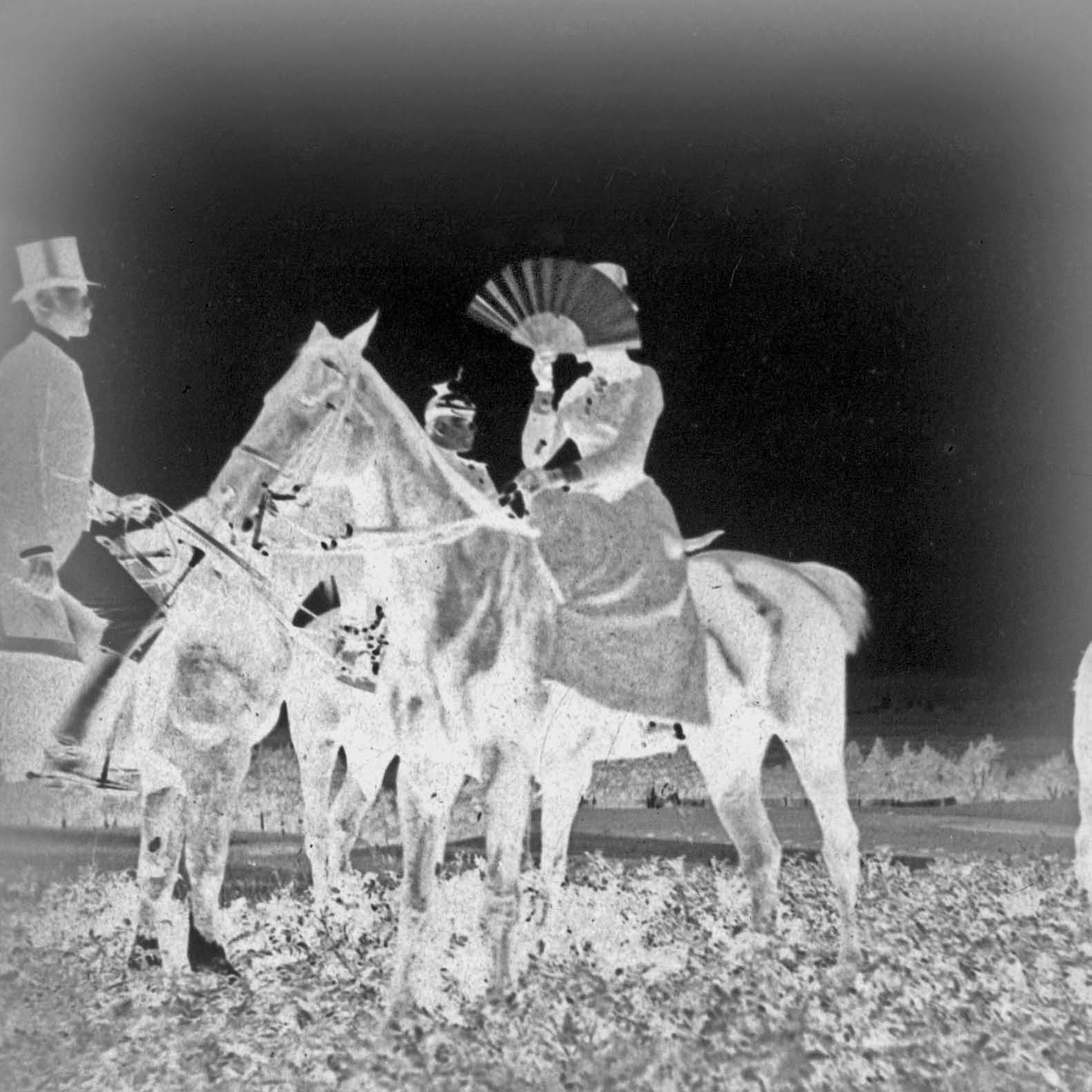When I think about her, I recall Malte’s words and the question comes to mind: what death did she carry in herself, nurse, breed, train, tame, raise, educate, shape – so consistently, till the abrupt and perfect end of her days? What was the lethal fruit of her womb, the seed which matured secretly in her until 10th September 1898? Did she lead the death – or did it seem to her that she did – until it became all too clear that it is t h a t o n e, the other one, who became conspicuous only when it was already growing in her, who holds the reins? Is this question not more important than creating a thoughtless exhibition of serial icons which served and still serve to hide her from our eyes? Let us avert our gaze from them and focus on the black spot which is all that remains of her (yes, but which of them?). It started so innocently with what is currently known in historiography as ‘the cult of the body’ or ‘of beauty’. All that has been written about the first woman to use her body – so intentionally and modernly – to create a popular culture myth is true; in fact, it is the first attempt on such a scale and so immediately successful. But this is the very icon that we have decided to disregard. After all, we know it so well. But it is only once we cease to look at the full picture which results from these attempts at retaining beauty and image, and if we start instead to consider its elements – look at it from the inside, as it were – that we suddenly and anxiously find that i t is already there. Otherwise how can we make sense of what she once said to Costantin Christomanos, ‘I can feel my hair. It is like a strange body on my head.’? And how embarrassing the ambiguity of the whole conversation is, ‘Your Majesty wears hair as a crown instead of a crown,’ ‘Except that any other crown is easier to proffer’. He means the hair, she means the position. And the o t h e r one? Can it not be heard in the words uttered by her, if she is listened to carefully? The other one speaks about strangeness – the strangeness of the body. As long as we are young we seem to be in control of it. We treat it like a servant at our service ever since we remember; its task is to perform what we order it to do, walk around in a lordly attire, be the visible motto of its master. God only knows how much embarrassment and resentment the servant feels at the service of such a giovin signore. But the servant knows his hour will come. First, his master will one day realise that as a matter of fact he is dependent on the servant. This is easily justifiable by the need to retain one’s image. Yet in time the master will observe that the servant performs his duties more and more negligently and becomes more and more arrogant, until he stops to do them altogether. And the master has no power over him. The rest of the story is well known. It will become clear soon enough (and in normal circumstances, without the need of a revolution) who rules who.
One day Titania (we will refer to her by the name she chose for herself) discovered that gracious heaven endowed her with a body like a work of art on which an artist works for years with boundless love and total devotion. She was right when she decided that it was a talent she should use. Marie Larisch, ‘She worshipped her beauty like a pagan worships his god and was on her knees in front of it. Seeing the perfection of her body gave her aesthetic pleasure. Everything that could taint it was non-artistic and hideous to her… She believed that her task in life was to remain young and directed all her thoughts to the best means to retain her beauty’. We can freely admit it: it is easy to idolize such divinity. Yet the malicious Larisch did not perceive another aspect of it: the body was ein Schirm to Titania. This old German word does not have a Polish (or English) equivalent. In the old times it referred to the leather that covered the Germanic warrior’s shield, then metaphorically to any protection and cover from something dangerous or annoying. That is why Schirme was used to shield lamplight (Lampenschirme, lampshades), to absorb excess heat from stoves (Ofenschirme, stove screens), to protect from sunshine (Sonnenschirme, parasols) or from rain (Regenschirme, umbrellas). Today Schirm also denotes the screen where pictures are shown (Bildschirm). Her body was all that: protection from danger, cover from inquisitiveness, a screen to show and hide things at the same time. And yet her body was ultimately something (somebody?) strange to her. Like an ancient agnostic, she believed that her soul had fallen from the better world, that God who created this world is a dreadful and impenetrable God, Jehova of the Old Testament. When Maria Valeria asked her tremulously about her faith, she was to have answered, ‘Oh, yes! I believe in God – so much unhappiness and suffering cannot be the work of coincidence. He is powerful, terribly powerful and cruel’. Feeling that she was sentenced to a lifetime in the prison of a strange body, she decided at least to do a tour de la prison, to tour the prison. Hence this sad life spent running away, like a seagull which has no homeland and no shore to call her own (she sang so herself). And so she explained it to Christomanos, ‘Life on a ship is more beautiful than any shore. Destinations attract you only because the voyage separates them from you. If I arrived anywhere knowing that I would never leave the place, the stay in paradise would turn into hell for me. The thought that I have to leave a place moves me and makes it pleasant to my eyes. In this way I bury in the ground the transient dream of setting out for the new’. This also explains her love of the open sea, which gives the impression of infinity, and to attributes of grandeur, all of them present in a storm on the sea. Once she had herself tied to a chair on deck, like Odysseus, to the horror of her retinue and ladies-in-waiting, who sought refuge wherever possible. The storm may have been a vision of apocalypse which would precipitate the end of the bad world. And the attempt to reach the limits of danger, the limits beyond which there is annihilation of the body (and of the world) may have been an experience of the grandeur of the soul, not of the moral grandeur but its ontological otherness.
Since the time she recognized – ahead of screen stars and opera soloists of the coming century – that her body was not fit for public appearance, she herself decided to embalm the icon and withdraw from the world of the visible. Since then ‘the faithful companions of her external existence, the almost integral components of her bodily appearance’ were to be her parasol (Schirm), her veil and fan. Christomanos, ‘In her hand they are not what they are for other women; they are emblems, weapons and a shield in the service of her true nature… It is with them that she wants to repel people’s external life as such, not to give it access to herself, not to bow to the «the herd right of little evolved animals », defend her inner silence from profanity; she does not wish to leave the closed gardens of grief that she hosts within herself’. The parasol, veil and fan become bearers of a complex metaphor worthy of nō theatre; using them in an unusual way Titania, like a new Pentesilea, restored to the word Schirm its archaic aggressive, war denotation. Now the game becomes subtle. We can just imagine how these two conspired, if they conspired. Because there is no doubt that the o t h e r o n e was dominant in the final period. And looking at the few shots from her last years, we cannot resist the feeling that it is not Titania that we see but her death which pretends, like a perfect double, to be her in the few public appearances she made then. In his description of Hungarian millennial celebrations of 1896, Duke von Eulendorf compared her to an ink spot on a great multi-coloured painting. These rare public appearances could turn any celebration into a mediaeval morality play in which her veiled silhouette wielded her black fan like a scythe in an explicit allegory despite its innovative iconographic representation. The Italian anarchist with wild eyes did not know from what prison he had released her, how fast and how painlessly. The o t h e r o n e, the one who had taken her over, finally claimed her body. At last, it was the body. A lost seagull soared high upwards, gliding over Lake Geneva, which ‘is the colour of the sea, exactly like the sea’.
Translated from Polish by Anna Mirosławska-Olszewska
Selected bibliography:
B. Hamann, Elisabeth. Kaiserin wider Willen, München 2005.
M. Valérie, Das Tagebuch der Lieblingstochter von Kaiserin Elisabeth von Österreich 1878-1899, hrsg. M. and H. Schad, München 1998.
C. Christomanos, Tagebuchblätter, Wien 2007. M. L. von Wallersee [Gräfin Larisch] Kaiserin Elisabeth und ich, Leipzig 1935.










